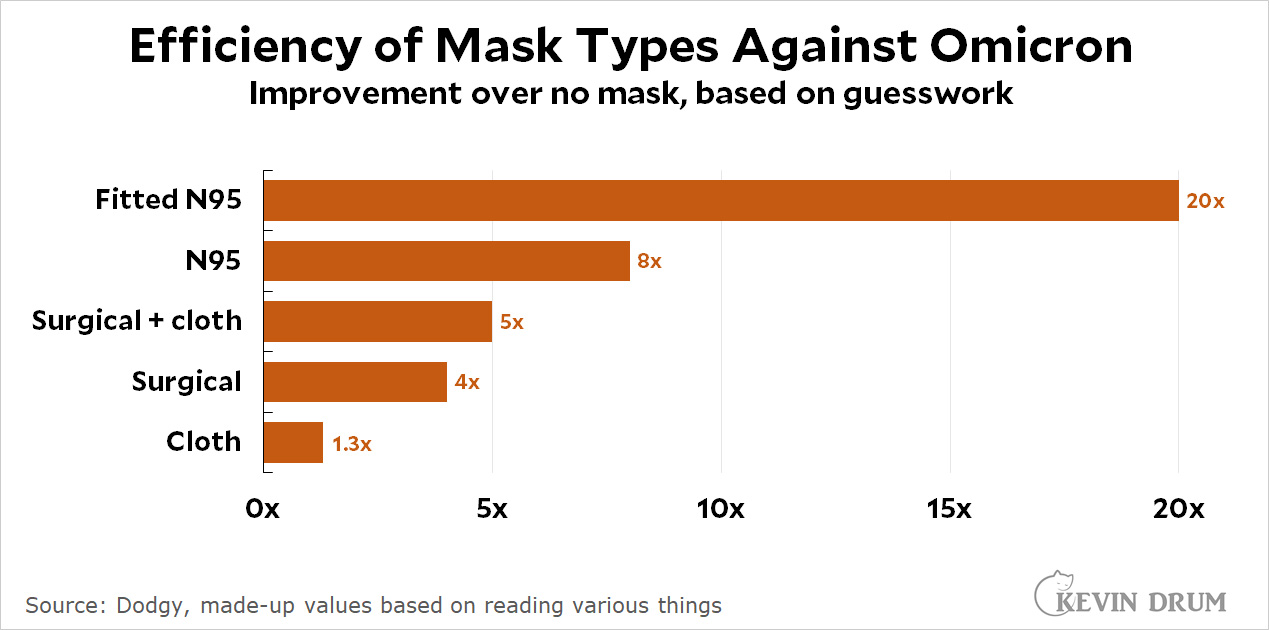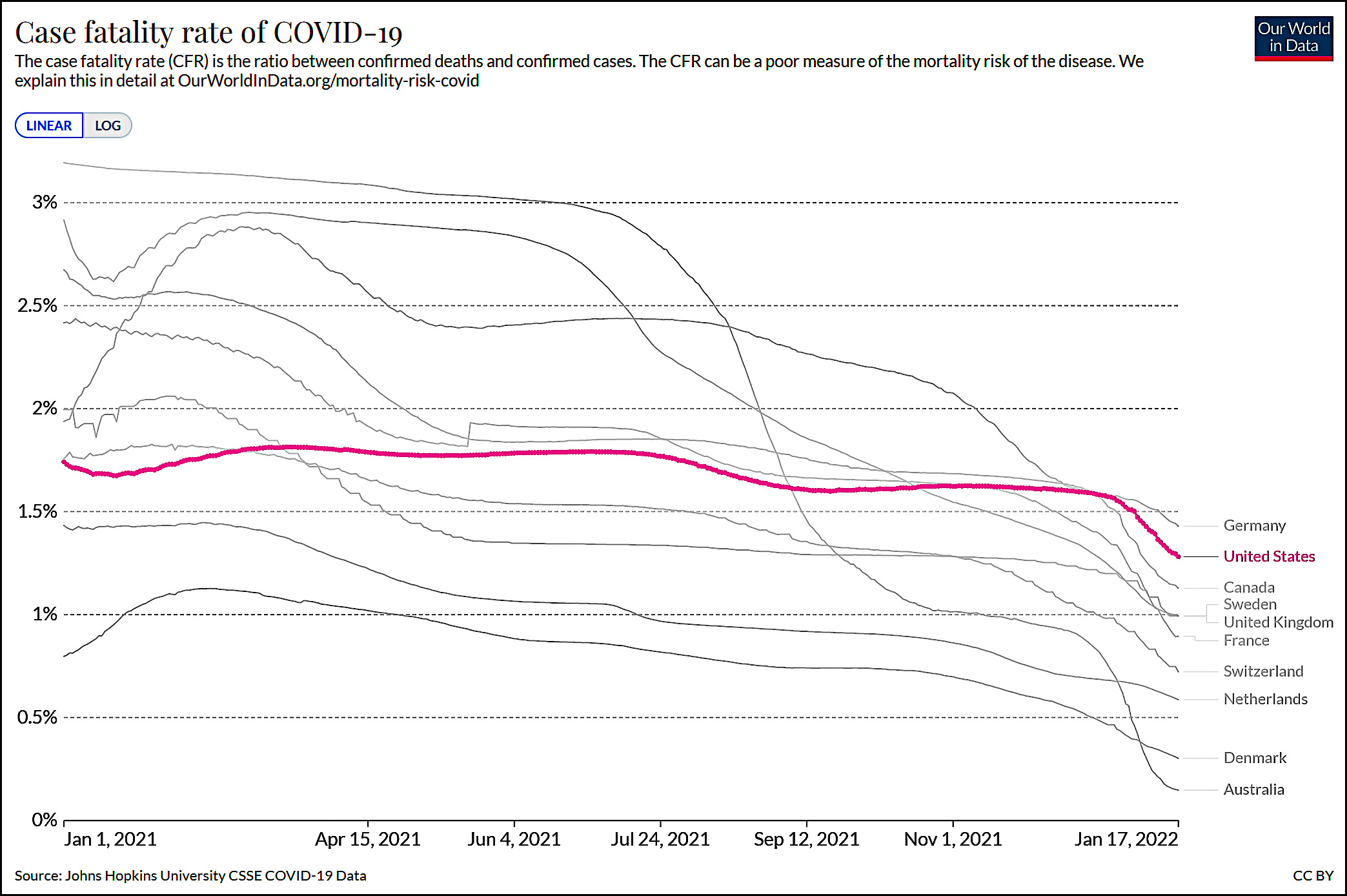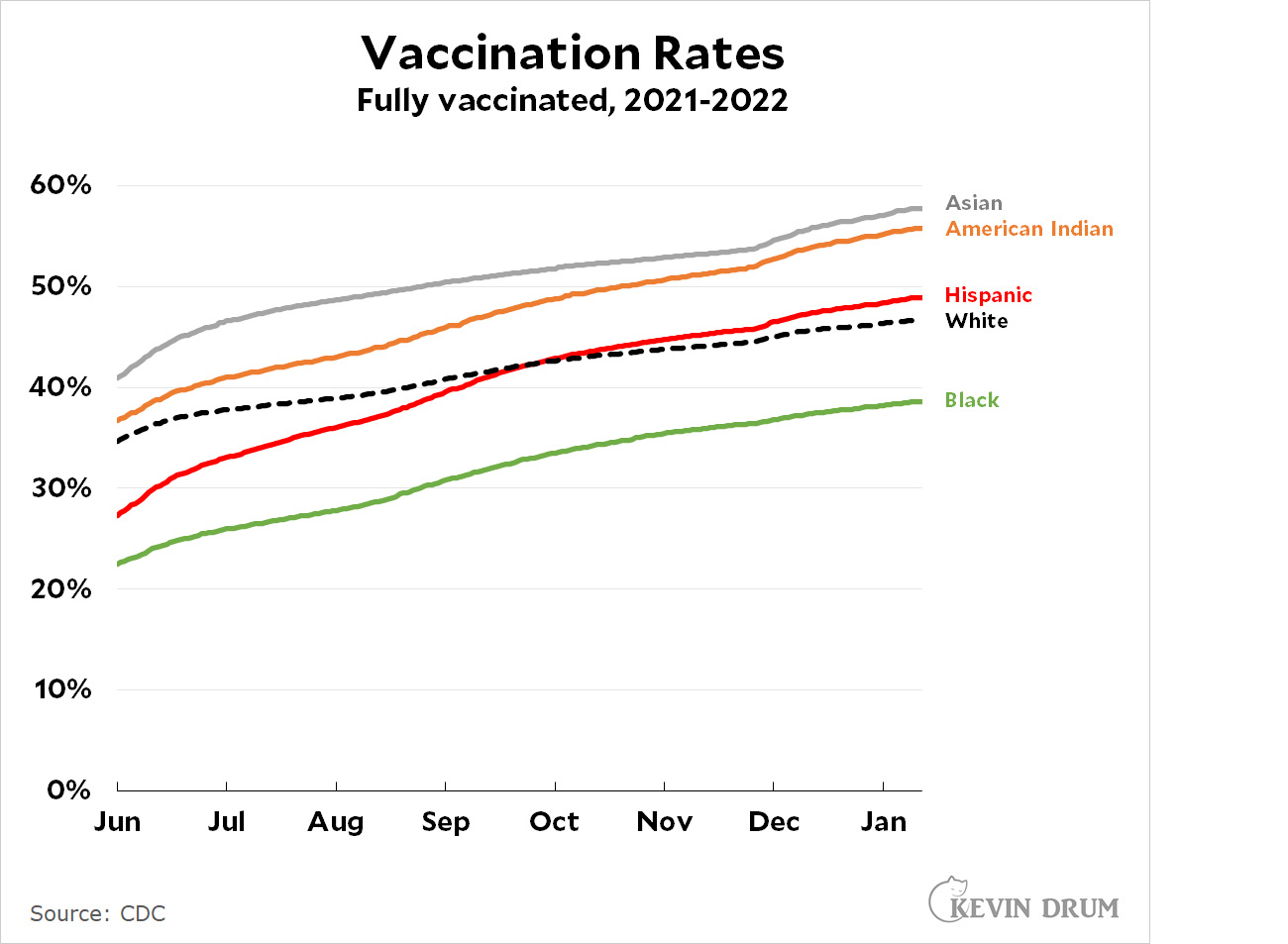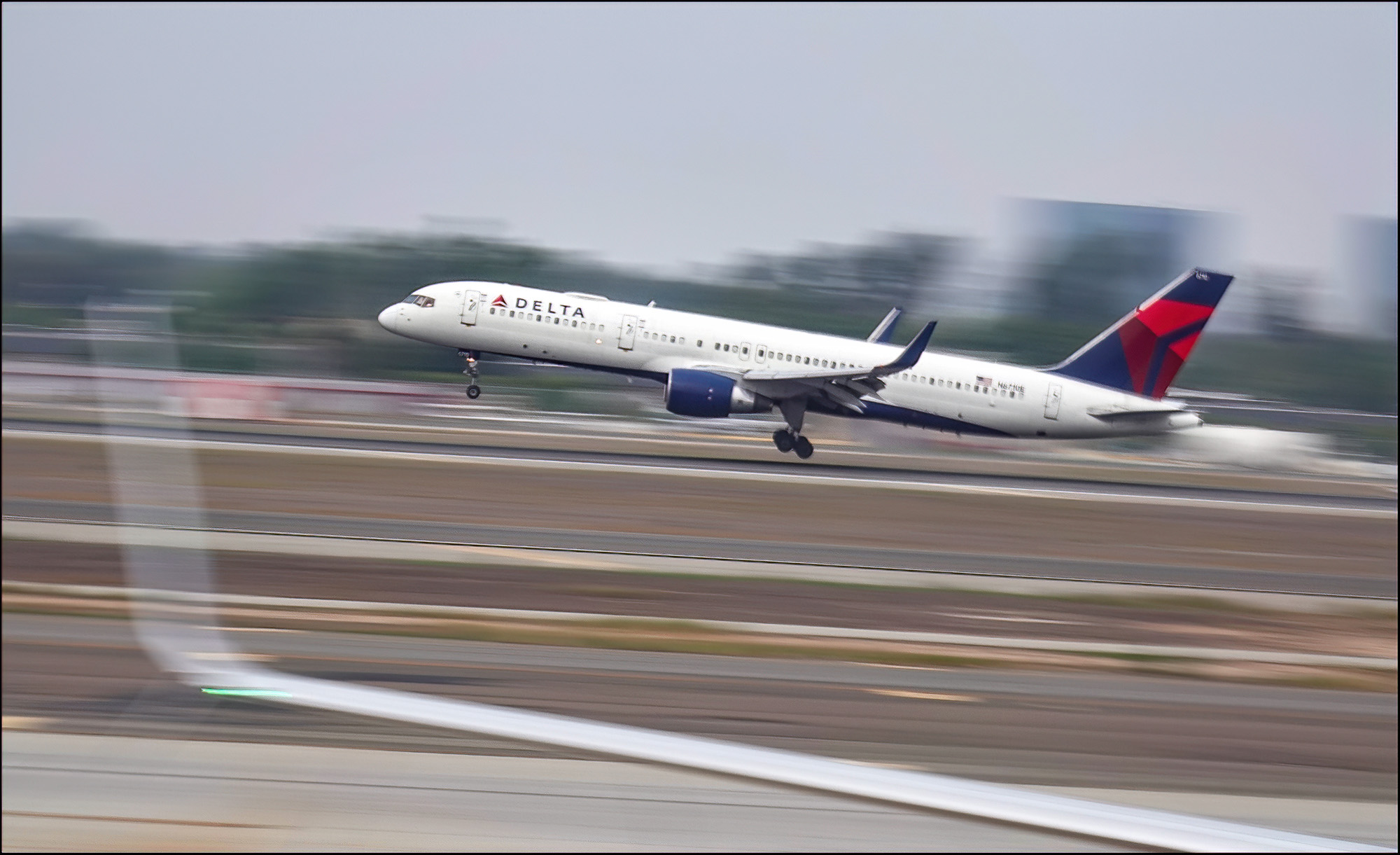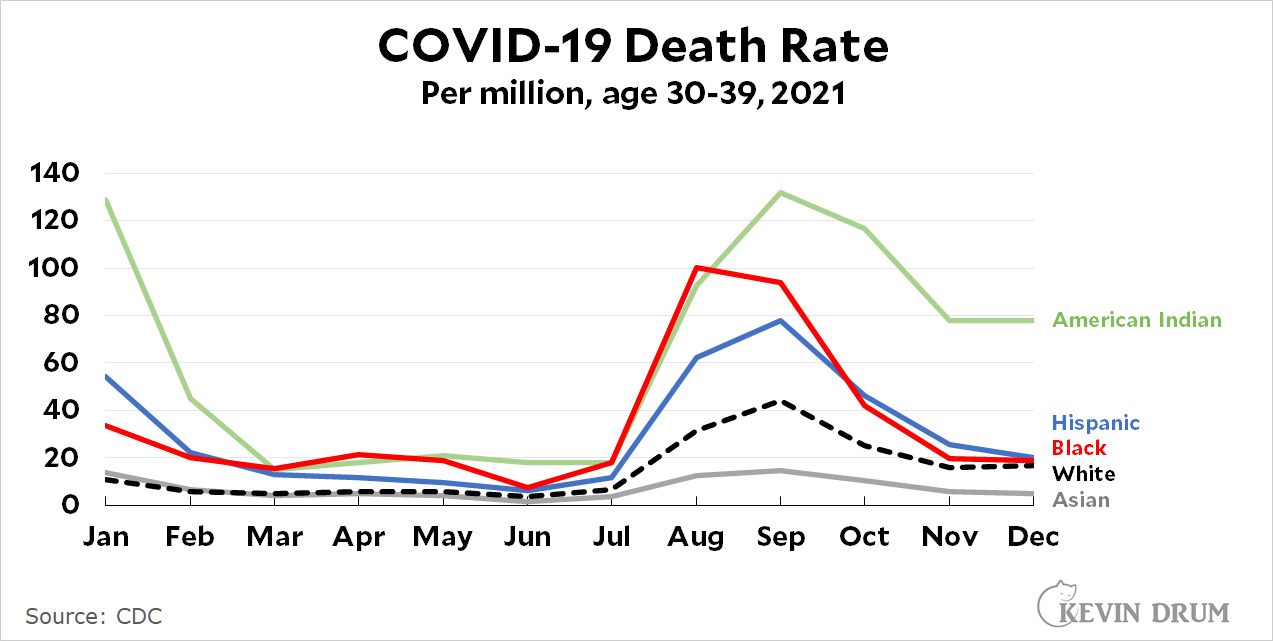The most amusing part of yesterday's press conference was Joe Biden's response to questions abut Ukraine. Everyone knows that there's only one acceptable answer here: If Putin puts one foot over the border we'll kick his ass so hard he'll end up in orbit. Then, when Putin invades and the US does more or less nothing, conservative hawks will be up in arms about red lines and weakness and failing our friends—even though they themselves oppose putting American troops into battle.
So instead, Biden just shrugged and said what everyone already knows: Putin is probably going to invade one way or another, and he'll eventually be sorry if he does. It'll be a rerun of Afghanistan or Vietnam. But Europe, as usual, is deeply divided about what to do, so there's not a whole lot we can do either.
Everyone already knows this. We know it. Putin knows it. Europe knows it. Hell, even I know it. But for some reason it's pearl clutching time if a president says it.
The hell with that. Better to tell the truth now than to make promises everyone knows we can't keep. It's Putin's call now, and Biden is right: invading Ukraine will send Russia down a rat hole for years. But in the face of a divided Europe, there's not much that the US can or should do about it.


